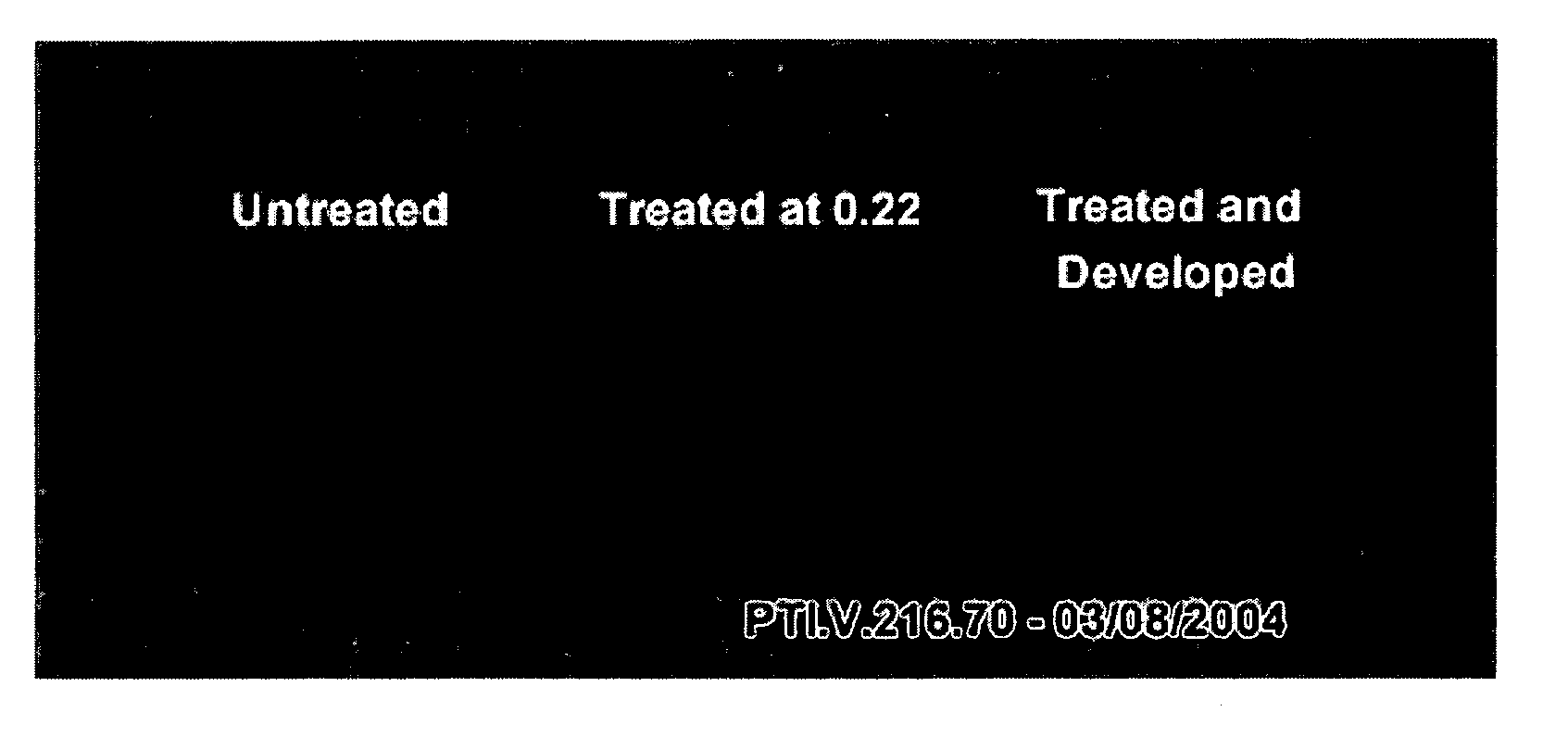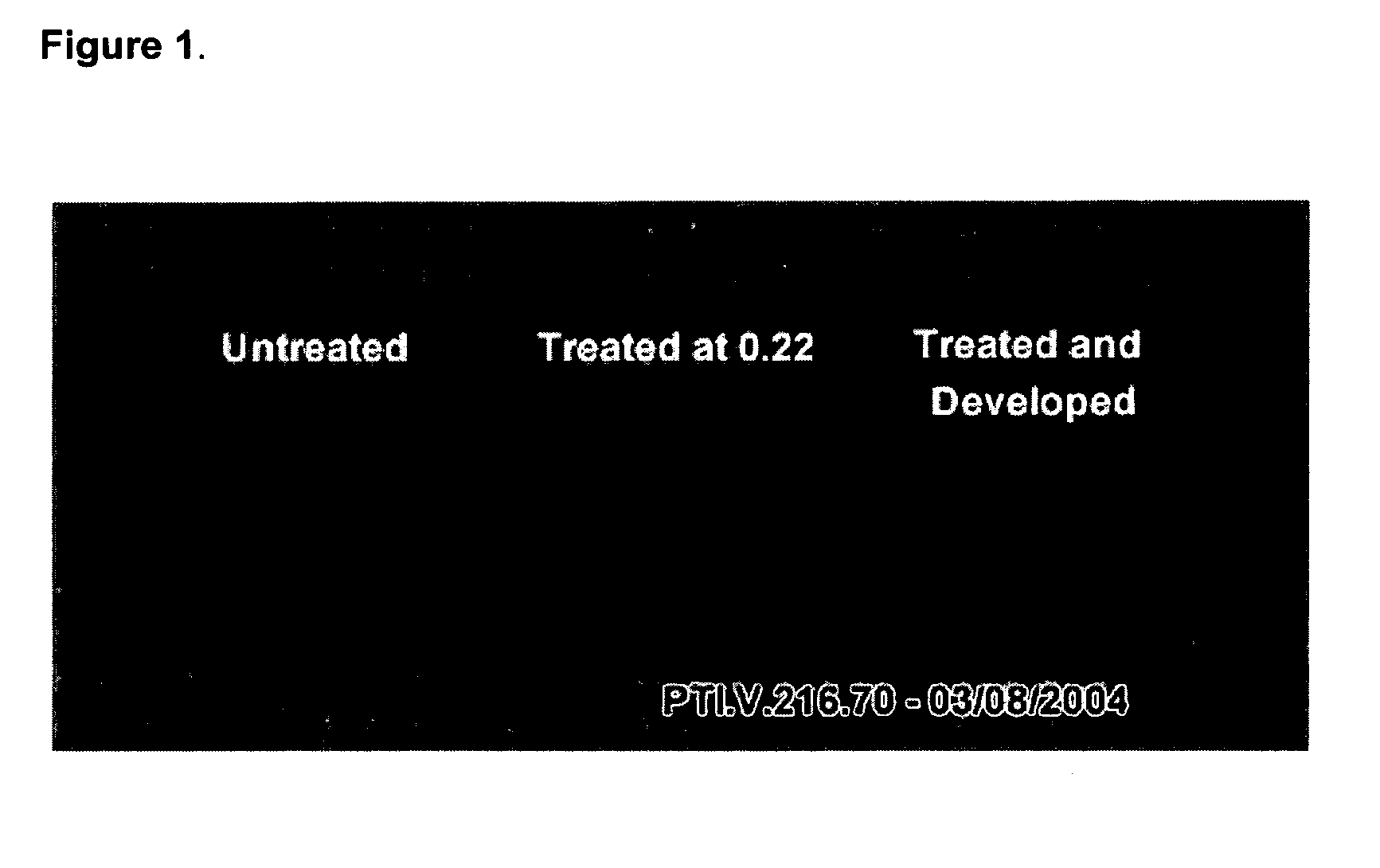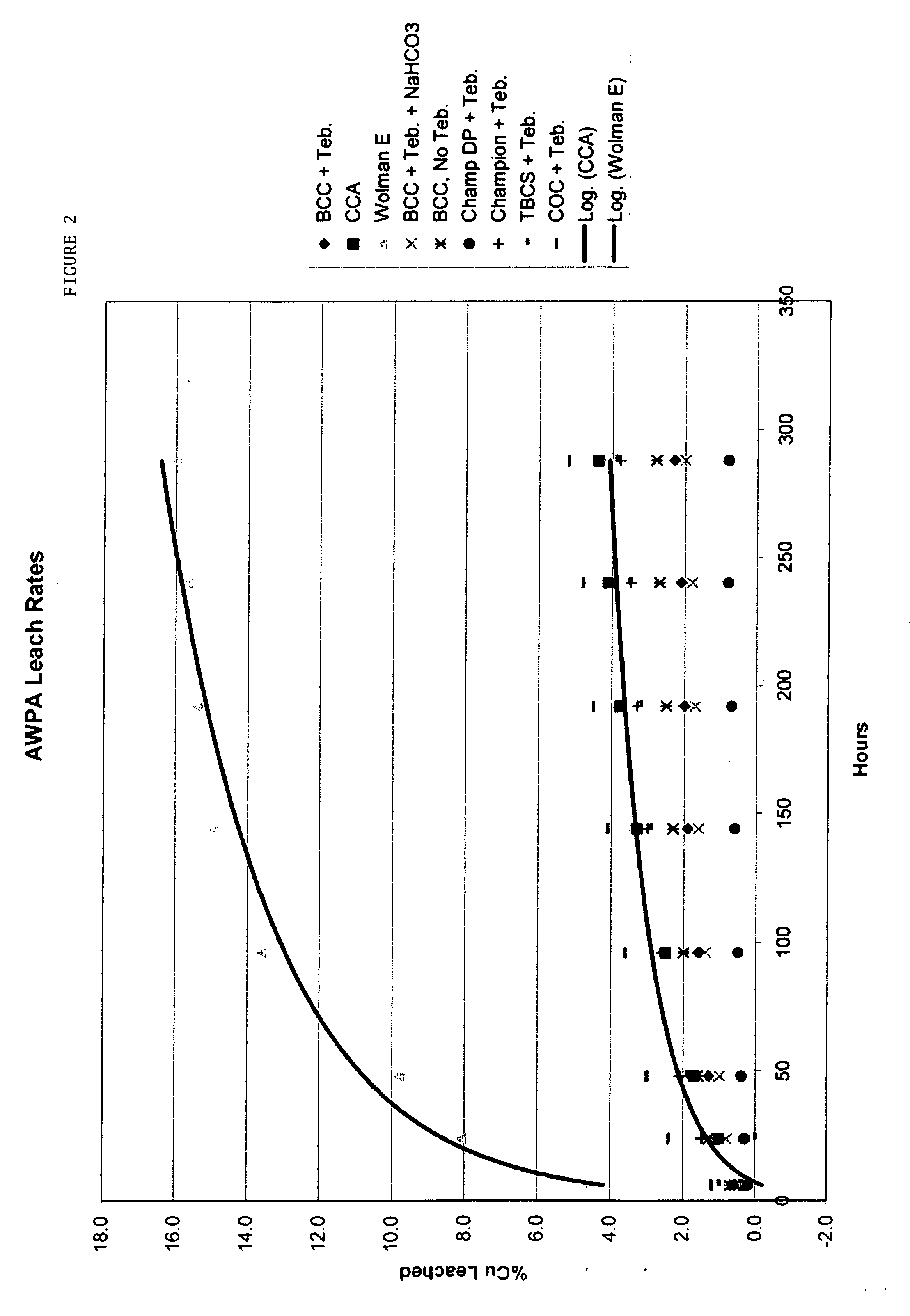Use of sub-micron copper salt particles in wood preservation
a sub-micron copper salt and wood technology, applied in the field of wood preservatives, can solve the problems of forming copper oxide, exacerbated problems, and reducing the size of the particle, so as to reduce the particle diameter and reduce the particle size
- Summary
- Abstract
- Description
- Claims
- Application Information
AI Technical Summary
Benefits of technology
Problems solved by technology
Method used
Image
Examples
example 1
Injection of Formulated Slurry into Wood
[0121] The following are representative slurries that were prepared and sent to another lab to determine whether the particles were suitable for injection into wood: 1) a formulated (having dispersants, etc) very concentrated copper hydroxide product, where the d50 of the particles was 0.17 microns, and the % copper (by weight) in the product was 37.6% (for comparison, the % copper in pure copper hydroxide is 65%); 2) a slurry of copper hydroxide particles in water, where the d50 of the particles was 0.17 microns, and the % copper in the slurry was 20.5%; 3) a comparative material comprising wet copper hydroxide particles, where the d50 of the particles was 2.7 microns, and the % copper in the comparative product was 58.6%; 4) a stable aqueous gel comprising wet-milled copper hydroxide particles and dispersants, where the d50 of the particles was 0.15 microns, and the % copper in the slurry was 11.7%, where the gel fully disperses when dilute...
example 3
Milling Sub-Micron Copper Hydroxide
[0124] A sample of the copper hydroxide particles used in the formulation of Champ Formula 11® (available from Phibro-Tech Inc., Fort Lee, N.J.)—copper hydroxide particles having a d50 of 0.28 microns and a d80 of 1 micron and formulated with about 2 to 6 parts by weight of dispersants / stabilizers / rheology aids per weight of copper hydroxide—was wet milled in a Union Process Model 01-HD mill at 500 RPM using ⅛th inch steel balls as the grinding medium. The total milling time was 60 minutes, though samples were taken at selected intervals during this time. The d50 declined only slightly, indicating the milling with the coarse milling material had little effect on the size of sub-micron particles. The fraction of material with a diameter less than 1 micron increased over the 60 minutes of milling, however, from 80% at time zero to 88% at 30 minutes, and further to 89% with an additional 30 minutes of milling. The fraction of material with a diameter...
example 4
Milling Sparingly Soluble Copper Salts with 0.5 mm Zirconium Silicate
[0132] The Champ DP® material was placed in a mill with about a 50% by volume loading of 2 mm zirconium silicate milling beads. Samples were removed intermittently and the particle size distribution was determined. Wet milling with 2 mm zirconium silicate milling media had no effect—wet milling for days resulted in only a very slight decrease in particle size, a small shift in the particle size distribution, but the material was not injectable into wood.
[0133] In contrast, five samples of particle copper salts made following standard procedures known in the art were milled with 0.5 mm milling material. The first two samples were copper hydroxide—one with an initial particle size d50 of 50 of 2.5 microns. A basic copper carbonate (BCC) salt was prepared and it had an initial d50 of 3.4 microns. A tri-basic copper sulfate (TBS) sample was prepared and this material has a d50 of 6.2 microns. Finally, a copper oxychl...
PUM
 Login to View More
Login to View More Abstract
Description
Claims
Application Information
 Login to View More
Login to View More - R&D
- Intellectual Property
- Life Sciences
- Materials
- Tech Scout
- Unparalleled Data Quality
- Higher Quality Content
- 60% Fewer Hallucinations
Browse by: Latest US Patents, China's latest patents, Technical Efficacy Thesaurus, Application Domain, Technology Topic, Popular Technical Reports.
© 2025 PatSnap. All rights reserved.Legal|Privacy policy|Modern Slavery Act Transparency Statement|Sitemap|About US| Contact US: help@patsnap.com



